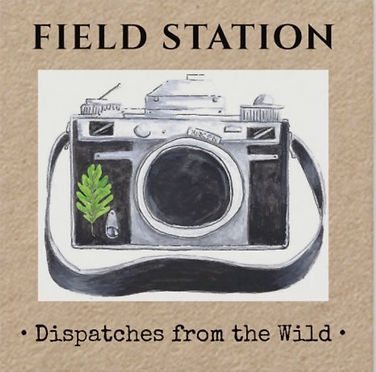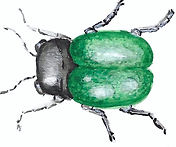
Way back on January first, my family and I went to a nearby nature park for the Christmas Bird Count Citizen Science project. I guess we weren't really prepared to sit and watch for birds coming to bird feeders. We wanted to get out and hike. Halfway down the trail, I realized that we didn't have binoculars and of course birds weren't landing on the ground. So, instead, we looked for fungi. This became the subject of this month's snail mail project.

We found orangish-brown Dryad's Saddle on the side of a tree, little spent puffballs on a decaying log, and lots of bracket fungi. I've never paid much attention to mushrooms. It was when I was intentional about finding them, it became a fun game of discovery. I was impressed with how different they were in shape and color. We don't forage for mushrooms. I don't think it's worth the risk, but there are people who really get into that. We are more interested in them from a biological perspective and just took pictures. Once you zoom in, it's amazing to see, especially with the shelf and bracket fungi, the concentric zones of color and how much they resemble seashells. I wonder what forces in nature produce such geometry.
I have since read the book, The Hidden Life of Trees by Peter Wohlleben, which talks about the fungal mycelium underground that connects trees and plants and provides a network of chemical communication in the forest underground. I learned that the main part of the fungus is under the earth and the mushroom we see is just a fruiting body. We're only beginning to understand the importance of fungi. We have since learned to identify some by using our keys and field books. I have photographed fungi every month and have seen new species pop up while others die back. It's endlessly entertaining to look for them and make new discoveries.
I thought about mushrooms as the great decomposers of life, the cyclers, and wondered how

that related to the endless cycles of our own lives- our seasons, times to expand and to contract, the cycle of birth, life, death, and rebirth. I found lots of great poetry to describe these processes and feelings. In my latest snail mail letter, I decided that this would be the perfect topic to write about and illustrate.
"Nature doth this kindly heal every wound. By the mediation of a thousand little mosses and fungi, the most unsightly objects become radiant of beauty. There seem to to be two sides of this world, presented us at different times, as we see things in growth or dissolution, in life or death, and seen with the eye of the poet, as god sees them, all things are alive and beautiful."
- Henry David Thoreau

In my research I discovered that children's author, Beatrix Potter, was also a mycologist and I enjoyed weaving her story into the equation. She created beautiful illustrations of fungi and conducted experiments with them. She attempted to be accepted into London's Linnean Society, however, at the time only men were allowed into scientific societies. So, she abandoned her course of study and, instead, shared her love of nature through her children's stories of Peter Rabbit and Jemima Puddleduck. She became one of the most beloved children's writers whose stories nearly everyone holds dear.
Ironically, a hundred years later, scientists came to appreciate her studies and the Linnean

Society eventually recognized the importance of Beatrix Potter's work. A field note is included with my snail mail letter that shows the life cycle of a mushroom and a map on the back shows where Beatrix Potter's Hill Top House is located in England. Lots of fun little gifts are tucked inside- a card, stickers, and photo I took with a quote by her on the back. We should all know of her work.
If you are interested in mushrooms, you may love to celebrate September as the month of the mushroom. The Kennett Square Mushroom Festival that takes place every year in Kennett Square, Pennsylvania, where they identify themselves as "the mushroom capital of the world". They have a two-day family festival that hosts more than 100,000 visitors to enjoy its many mushroom vendors. They have a fried mushroom eating contest too. But if you are like me and are interested in a more scientific approach, perhaps investigate the citizen science projects going on at Citizenscience.gov. There are many projects going on that seek to document the diversity of species across the US. Or you may try your hand at writing a snail mail letter of your own.
Happy Mushroom Month!




Comentarios